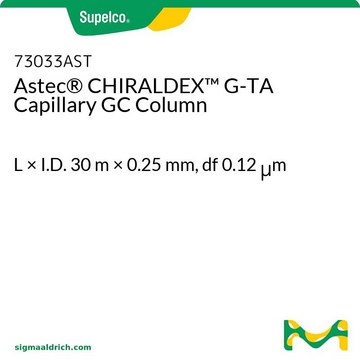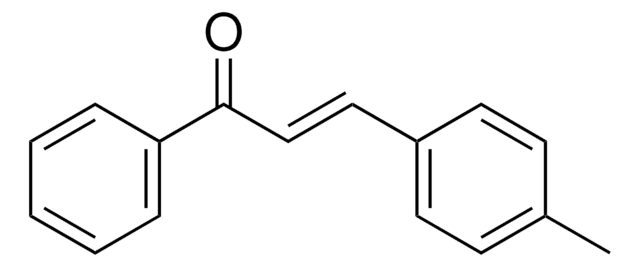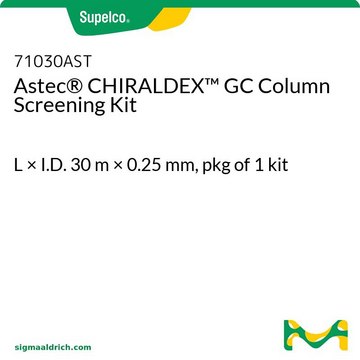72003AST
Astec® CHIRALDEX™ A-DA Capillary GC Column
L × I.D. 30 m × 0.25 mm, df 0.12 μm
Synonym(s):
GC column, chiral, alpha-dextran
About This Item
Recommended Products
material
fused silica
Quality Level
description
GC capillary column
packaging
pkg of 1 ea
parameter
-10-200 °C temperature (isothermal)
-10-220 °C temperature (programmed)
Beta value
500
df
0.12 μm
technique(s)
gas chromatography (GC): suitable
L × I.D.
30 m × 0.25 mm
matrix active group
non-bonded; 2,6-di-O-pentyl-3-methoxy derivative of α-cyclodextrin phase
application(s)
agriculture
chemicals and industrial polymers
cleaning products
clinical
cosmetics
environmental
flavors and fragrances
food and beverages
forensics and toxicology
life science and biopharma
personal care
pharmaceutical (small molecule)
column type
capillary chiral
separation technique
chiral
Looking for similar products? Visit Product Comparison Guide
General description
Chem/Phys Resistance
- -10 °C to 200 °C isothermal, 220 °C programmed
Other Notes
Legal Information
Choose from one of the most recent versions:
Already Own This Product?
Find documentation for the products that you have recently purchased in the Document Library.
Our team of scientists has experience in all areas of research including Life Science, Material Science, Chemical Synthesis, Chromatography, Analytical and many others.
Contact Technical Service







